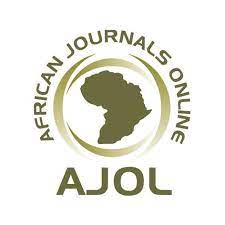ANALYSIS OF SOLID WASTE COLLECTION AND DISPOSAL IN OVERSEA, NASARAWA TOWN, NASARAWA STATE
Keywords:
Waste Management Concepts, Sources and Types, Solid Waste Management options, Disposal Options in Oversea, Nasarawa TownAbstract
Collection and disposal of solid waste is a key element in evaluating of waste management and source of
environmental problems in all urban areas of developed and developing World. However, tackling it is
challenging in most urban areas of developing world. Good example of this is Oversea, Nasarawa Town,
Nasarawa State, Nigeria. Probably due to absence of waste management facility aside unprecedented urban
growth which is apparently evident by amount of waste produced by the inhabitants; changes in the volume of
waste configuration and the management options. In an effort to rescue the ongoing and unabated
degradation of environments in developing worlds like Nigeria, from perpetual and uninterrupted
deterioration, several literatures related to this study were reviewed, but gap still subsist due government
failure and limitations of private sectors partnership meant to bridge government inefficiency as established
by various past studies. Therefore, the purpose of this paper is to analyse the present system of solid waste
management in Oversea, Nasarawa Town, Nigeria with a view to identifying the source of waste management
problem in the area and the way forward. To establish the types, volume, composition and methods of
managing solid waste in the area, a field survey was carried out of which data were collected from various
sources. Three randomly chosen homes in the residential neighborhood of overseas were used to estimate the
amount of garbage. Subsequently, from the data retrieved from various stakeholders, a total of 168 sample
were selected using systematic and stratified sampling techniques among the households as well as the staff of
the Urban waste management agency. 143 questionnaires were returned, while 138 were used for the analysis
yielding 80% and 75% return and response rate respectively. Descriptive statistics was used in this paper to
compute data. The result of the analysis revealed that the major source of solid waste comes from households
which is Domestic with 45.70 %, followed by Commercial with 27.50%, special waste 18.10%, Industrial
2.20%, while Others with 6.50℅ respectively. The result also revealed that method of solid waste disposal in
the area range from drainage dumping 10.9%, open place dumping 66.6%, which the highest, followed by
stream dumping 22.5%, due to the absence designated collection points and disposal sites in the area under
study. Based on the results of this paper, the following were recommended among others; The government
should provide the essential facilities, including designated collection points and dump sites, equipment,
sufficient funding, and qualified staff to manage the various wastes produced. It should also raise public
awareness through educational campaigns about the risks associated with the direct or indirect effects of
indiscriminate waste dumping on human health. Additionally, in order to ensure environmental quality,
proper legislation should be put in place to promote public engagement in the community.
Downloads
Published
How to Cite
Issue
Section
License
Copyright (c) 2023 Global Journal of the Built Environment (GJBE)

This work is licensed under a Creative Commons Attribution-NonCommercial-NoDerivatives 4.0 International License.






